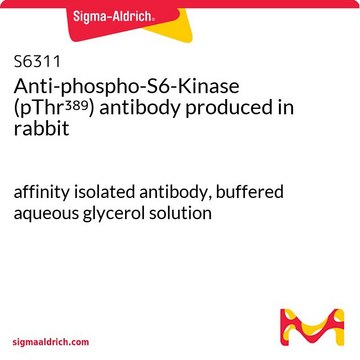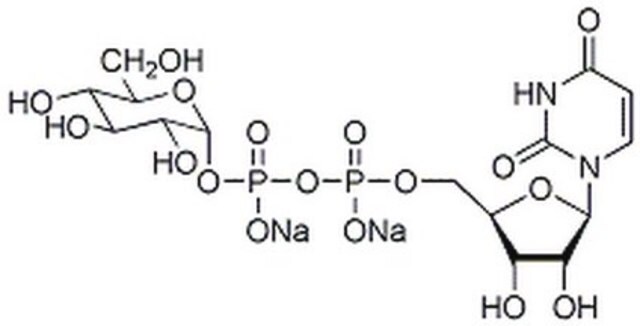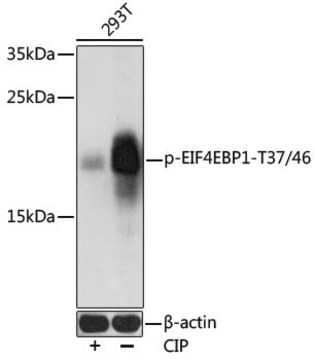S6436
Anti-phospho-S6-Kinase (pThr421/pSer424) antibody produced in rabbit
affinity isolated antibody, buffered aqueous glycerol solution
Sinônimo(s):
Anti-phospho-p70S6K (pThr421/pSer424)
About This Item
Produtos recomendados
fonte biológica
rabbit
Nível de qualidade
conjugado
unconjugated
forma do anticorpo
affinity isolated antibody
tipo de produto de anticorpo
primary antibodies
clone
polyclonal
Formulário
buffered aqueous glycerol solution
reatividade de espécies
mouse, rat, human
técnica(s)
immunoprecipitation (IP): 1:250
western blot (chemiluminescent): 1:1,000
nº de adesão UniProt
Condições de expedição
wet ice
temperatura de armazenamento
−20°C
Informações sobre genes
human ... RPS6KB1(6198)
mouse ... Rps6kb1(72508)
rat ... Rps6kb1(83840)
Categorias relacionadas
Descrição geral
Anti-phospho-S6-kinase (p70S6K) (phosphothreonine 421/phosphoserine424) detects p70 S6 kinase and p85 S6 kinase only when activated by phosphorylation at Thr421/Ser424 and does not cross-react with other phosphoylated protein kinases.
Especificidade
Imunogênio
Aplicação
forma física
Exoneração de responsabilidade
Não está encontrando o produto certo?
Experimente o nosso Ferramenta de seleção de produtos.
Código de classe de armazenamento
10 - Combustible liquids
Classe de risco de água (WGK)
WGK 2
Ponto de fulgor (°F)
Not applicable
Ponto de fulgor (°C)
Not applicable
Escolha uma das versões mais recentes:
Já possui este produto?
Encontre a documentação dos produtos que você adquiriu recentemente na biblioteca de documentos.
Nossa equipe de cientistas tem experiência em todas as áreas de pesquisa, incluindo Life Sciences, ciência de materiais, síntese química, cromatografia, química analítica e muitas outras.
Entre em contato com a assistência técnica







